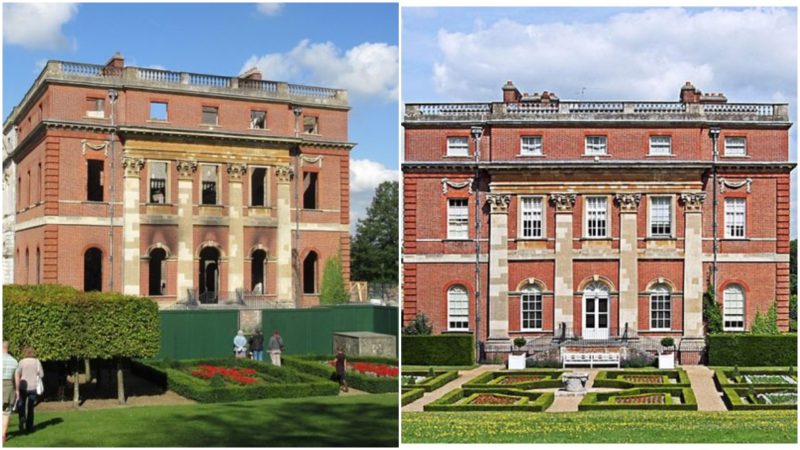Nearby to the town of Guildford in Surrey, England, is the village of West Clandon. Within this idyllic countryside village, there stands a house with a lavish past and a somewhat disturbing contemporary history.
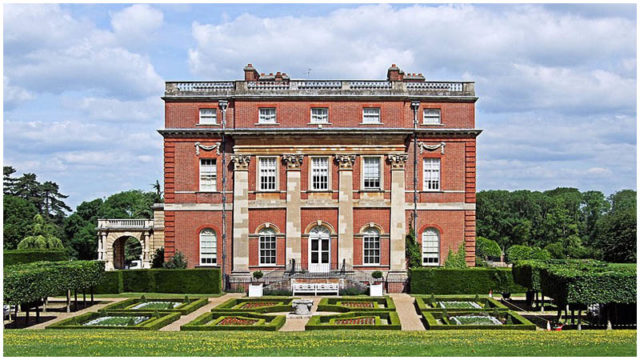
Sir Richard Onslow purchased the original Elizabethan house in 1641 from Sir Richard Weston, a famous agricultural inventor and canal builder. The Onslow family members were important figures at the time, with three of them presiding as Speaker in the House of Commons.
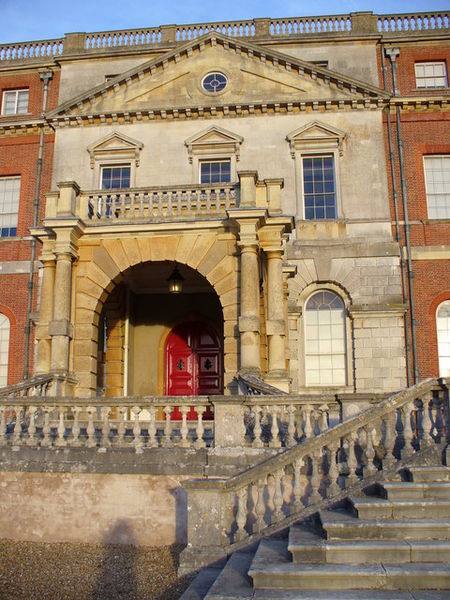
The house was rebuilt by Thomas Onslow, 2nd Baron Onslow, at the start of the 1720s, replacing the original house. The new house was designed by Giacomo “James” Leoni, using a combination of red bricks and stone decoration.
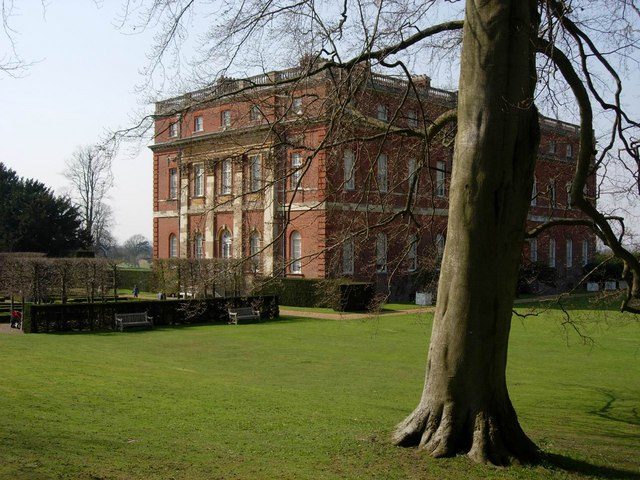
The interior of the mansion was completed during the 1740s. Its most notable feature was the Marble Hall, with a two-stories-high ceiling and a marble chimney created by John Michael Rysbrack, a notable Flemish sculptor.
Rococo ornaments were also included, designed by Italian-Swiss artists Bagutti and Giuseppe Artari.
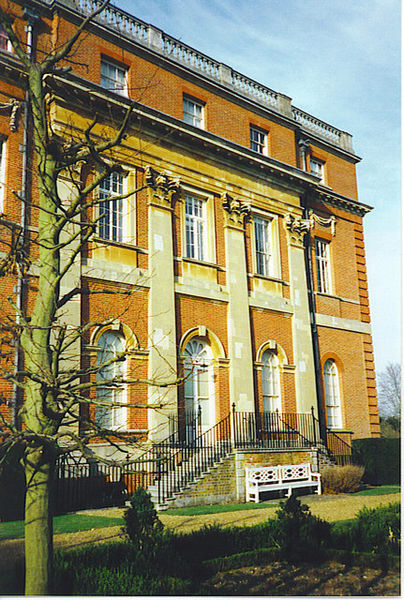
The house’s grounds were designed by English landscape architect Lancelot Brown in 1776. The designs completely reworked the original garden and included converting a forgotten canal into a lavish lake.
A carriage porch at the front of the house was added much later in 1876 and the estate received an additional Dutch garden in the late 19th century.
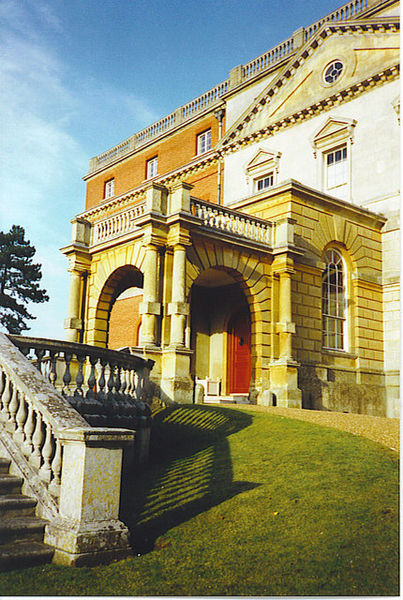
At the start of the 1940s, the house was in a desperate state. In 1945, the house went to William Onslow, 6th Earl of Onslow. William’s father had offered use of the house to the Public Record Office, where it was used to protect government documents during the war.
The family left the house during this time. Ten years later it was gifted to the National Trust, and it was confirmed that the house was in need of professional attention. From 1968 to 1970, the house received the much-needed restoration.
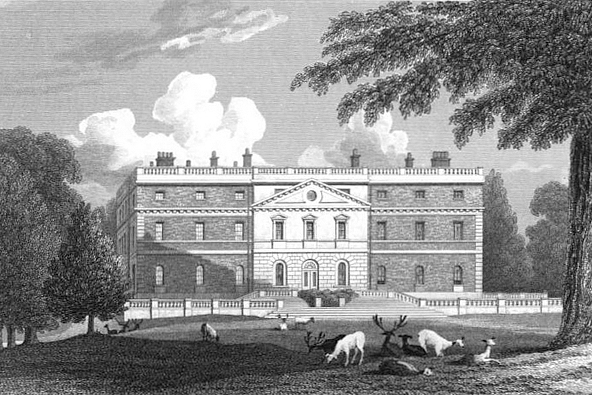
John Fowler, the well known English architect whose work includes decorations in Buckingham Palace and the Bank of England, was hired to take care of the interior. Bit by bit the house was restored to its former glory.
At the turn of the millennium, the house was adorned with a number of tapestries, sculptures, and carpets, and after receiving a marriage license the house became a much-desired wedding venue.
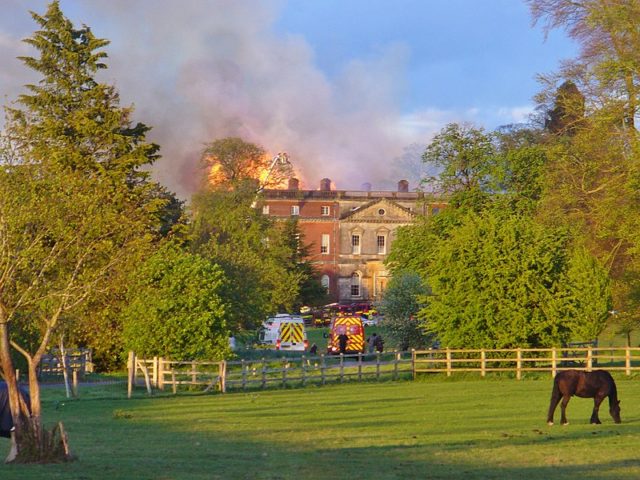
But this calm, idyllic scene was abruptly disrupted in 2015. At ten past four in the afternoon, the local fire brigade received a call stating that the famous Clandon Park House was on fire. 16 fire trucks and 80 firefighters were dispatched to fight the flames, which were trying to swallow the house whole. It was later concluded that the fire had originated in the basement.
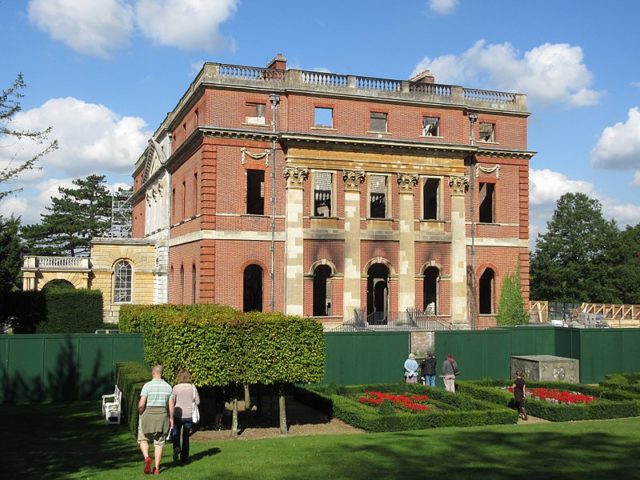
The grandiose house became a mere shell. Almost everything was destroyed by the firestorm, although some paintings and tapestries were saved. Once more the house was in a desperate state.
At the start of 2016, an announcement was made that some of the rooms would undergo restoration.
At the end of 2017, the architectural firm Allies and Morrison won the international-level competition to design the restoration of Clandon House. Rupert Onslow, 8th Earl of Onslow, disagrees with the restoration. According to the Telegraph: “The Earl said Clandon Park should be left in ruins as a sad reminder of its once-glorious past.”
